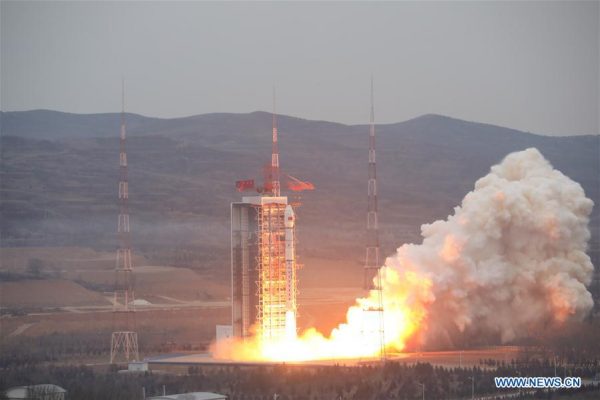China launches radar observation satellite – Spaceflight Now

A new all-weather radar imaging satellite for China’s civilian-oriented fleet of Gaofen Earth observatories launched Wednesday aboard a Long March 4C rocket, according to Chinese state media.
The Gaofen 12 radar surveillance payload lifted off from the Taiyuan space center, located in northern China’s Shanxi province southwest of Beijing, at 2352 GMT (6:52 p.m. EST) Wednesday, China’s government-run Xinhua news agency reported. Liftoff occurred at 7:52 a.m. Beijing time Thursday.
A Long March 4C rocket headed south from Taiyuan to place the Gaofen 12 spacecraft into an orbit around 370 miles (596 kilometers) above Earth, with an inclination of 97.9 degrees to the equator, according to independent U.S. military tracking data.
Chinese officials declared the Long March 4C flight a success, marking China’s 29th orbital launch attempt this year, and the 27th to achieve orbit. That’s more than any other country in 2019.
The Gaofen 12 satellite and the Long March 4C rocket were developed by the Shanghai Academy of Spaceflight Technology, a division of the China Aerospace Science and Technology Corp., the top state-owned contractor for the Chinese space program, according to Xinhua.
The Gaofen series of satellites are part of the China High-Resolution Earth Observation System, or CHEOS. Chinese officials say the CHEOS satellite fleet is a civilian-operated program comprising optical and radar imaging spacecraft, and authorities have published high-resolution imagery taken by previous Gaofen satellites.
Gaofen 12 is a radar imaging satellite capable of viewing Earth’s surface day and night, whether skies are clear or cloudy. Xinhua said Gaofen 12’s microwave instrument will provide images with a resolution of better than one meter, or 3.3 feet.
State media said Gaofen 12 will be used in land surveys, urban planning, road network design, crop yield estimation and disaster relief. The satellite’s data will also be used internationally by countries that are part of China “Belt and Road” foreign policy and economic development initiative, Xinhua said.
Email the author.
Follow Stephen Clark on Twitter: @StephenClark1.






